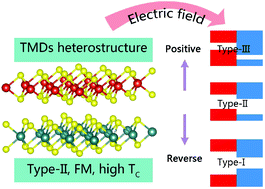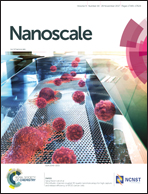Two-dimensional transition-metal dichalcogenides-based ferromagnetic van der Waals heterostructures†
Abstract
The lack of ferromagnetic (FM) van der Waals (vdW) heterostructures hinders the application of two-dimensional (2D) materials in spintronics, information memories and storage devices. Herein, we find theoretically that 2D transition-metal dichalcogenides-based vdW heterostructures, such as MoS2/VS2 and WS2/VS2, possess excellent characteristics of stable stacking configurations, FM semiconducting ground states, high Curie temperatures, staggered band alignment and a large band offset. Fortunately, 100% spin-polarized currents at the Fermi level can be achieved under certain positive external electric fields, which can filter the current into a single spin channel. Moreover, the majority channel undergoes the transition from type-II to type-I (type-III) band alignment under the negative (positive) electric field; while the band alignment of the minority channel is robust to the electric field. Our results provide a feasible way to realize 2D TMDs-based FM semiconducting heterostructures for spintronic devices.



 Please wait while we load your content...
Please wait while we load your content...